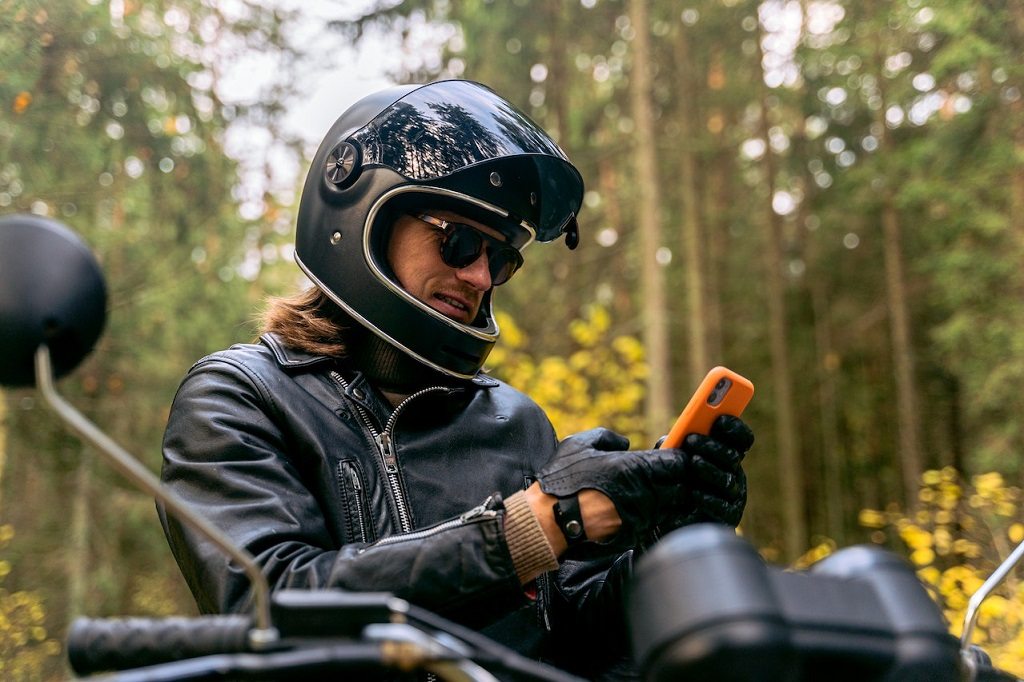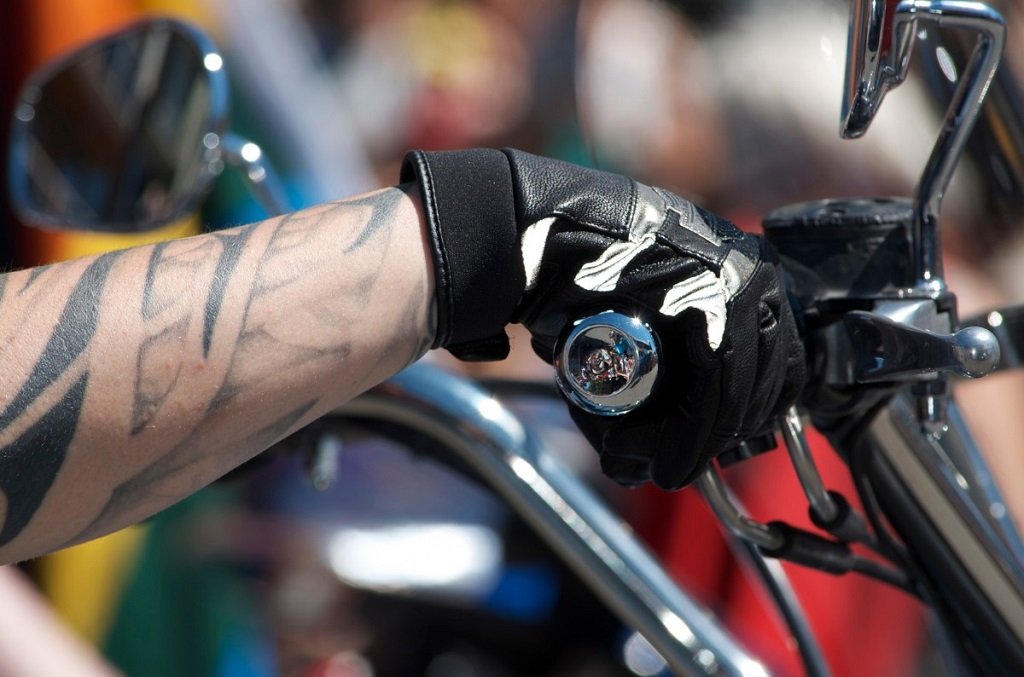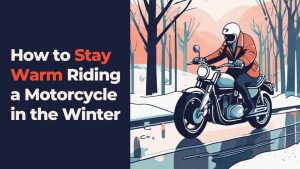When the temperatures drop, and the winter winds start to howl, most motorcyclists hang up their bikes for the season. But for those who can’t bear to be without their two-wheeled fix, one essential piece of riding gear can make all the difference: a pair of heated grips or heated gloves.
Which one does work best to keep you snug and warm? Let’s compare heated motorcycle gloves to heated grips to see which one should be a part of a biker’s toolkit.
What Are Motorcycle Heated Gloves?
These are exactly what they sound like: gloves with heating wires. Depending on the type, the heating mechanism can receive power from a battery pack or the motorcycle battery.
The winter gloves usually have a controller which allows you to adjust the temperature and change power settings. Regarding specific features, heated motorcycle gloves are typically made of leather or water-resistant materials to keep your hands dry while riding.
But some fabric options are more like regular gloves and don’t provide much insulation or protection against moisture.
Heated gloves can also come in various styles, with some models offering more insulation than others, such as the Gerbing heated gloves. No matter what kind of glove you choose, all riders agree that wearing a pair of these babies makes winter riding comfortable.

How Do Heated Motorcycle Gloves Work?
Now that we’ve established that heated gloves are excellent, let’s dive deeper.
A pair of heated gloves are wired with heating elements running through the fingertips and palm area to dissipate the heat and keep you warm. They have a built-in heating element, much like portable heaters do. The riding gloves are either battery-powered or run off the bike battery.
Dual-heating models are the best choice because of their powerful lithium-ion batteries, superior insulation, and USB charging. However, they are more expensive than other types.
When the current from the battery or motorcycle flows through the heating element, it produces heat. The heat is then transferred to the air inside the glove and from there to the rider’s hand.
All gloves typically have two or three heating speed settings: low, medium, and high. It allows the rider to set the warmth at the desired level, so they can stay comfortable whether riding on sub-zero, chilly days or in mild winter weather.
Get heated gloves if you want to heat your palms and have warm hands at zero degrees. Many models run on rechargeable batteries or the bike’s engine, so you don’t think about the battery life. You can entirely focus on the road when riding because cold hands will bother you no more, even if it’s a wind chill outside.
Choose the type of heated glove that best suits your needs, and enjoy the warm ride.
Heated Motorcycle Gloves: Pros and Cons
🎯What We Love
- Keep hands warm even in the coldest weather.
- Just put them on, and you’re good to go.
- Run on battery, bike engine, and an external power source.
⛔Things To Consider
- You may find them bulky and awkward to wear.
- More expensive than heated grips.
What Are Motorcycle Heated Grips?
Sure, you could wear heated glove liners or put some hand warmers into your pockets, but heated grips provide warmth and comfort that other methods can’t match. And when you’re riding in cold weather, every little bit helps.
So, what exactly are heated grips for motorcycles? They’re essentially just like heated car seats or steering wheels, but for your bike. They use electrical resistance to generate heat, and they’re controlled with a simple on/off switch or a dial that lets you adjust the temperature.
Heated grips are nice, and a must-have for any winter rider, and they can make a huge difference in your comfort level when the temperatures start to dip. If you’re not already using them, you should try them. The Oxford heated grips are some of the best in the market and worth your money.
Gloves are superior for really cold weather, but you can use the heated grips for any riding season, given the climate does not get too cold or too hot in your area.

How Do Motorcycle Heated Grips Work?
Warming up has never been easier than with heated grips. These handy little inventions are essentially a form of handlebar cover which plugs into your motorcycle’s battery to create controlled heat during your rides.
Motorcycle heated grips use a simple principle to transfer heat to your hands. They have a heating system that gets hot when electricity is passed through it. This element is sandwiched between two layers of insulation (usually foam).
When you turn on the heated grips, the electricity flows through the heating element and causes it to get hot. The heat then transfers through the insulation and warms your hands.
RELATED: How to Protect Motorcycles In Winter: Bikers Take Notes!
Simply put, they use electricity to generate heat. There are a few different ways to do this, but the most common is to use resistive heating. It works by passing an electric current through a material that has resistance, causing the material to heat up.
The material used in heated grips is usually a conductive polymer, a type of plastic that conducts electricity. The advantage of this type of heating is that it’s very efficient, and you can control the heat precisely. The heat is evenly distributed across the grip, which is vital for comfort.
Such a system differs from other electric-heated hand gear in utilizing a power source. It uses the engine’s power supply (battery) instead of an external power source, such as an internal battery pack with rechargeable cells.
Want to learn more about heated grips and heated gloves? Check this video:
Heated Motorcycle Grips: Pros and Cons
🎯What We Love
- A good option for a mild winter climate.
- Don’t require you to wear any extra gloves.
- Less expensive than heated gloves.
⛔Things To Consider
- Less effective in freezing weather.
- Use the motorcycle’s battery power.
- Require installation.
Heated Motorcycle Gloves vs Heated Grips
Heated gloves provide warmth to your hands, which is excellent when it’s freezing outside, and you don’t want your fingers to turn into popsicles. However, they can be bulky and cumbersome, sometimes interfering with your grip on the handlebars.
Heated grips attach to your motorcycle’s handlebars and use the heat from the engine to keep you toasty warm. They are less expensive than heated gloves and are more suitable for autumn and spring when the weather is not chilly.
The Verdict
So, which one shall you choose when riding next winter? Heated gloves or heated grips? Both options work great in keeping your hands snug, depending on the weather conditions.
If you only occasionally ride in cold weather or prefer to ride year-round except for the extremely cold days, heated grips will work well enough in keeping the hand warm. But if you’re a diehard motorcycle enthusiast who braves the cold regularly, heated gloves are the answer.
FAQs about Motorcycle Heated Glove vs Heated Grips
Do heated grips reduce hand numbness better than heated gloves?
Heated grips heat palms directly while gloves require heat penetration through lining. Grips can reduce numbness faster.
Can heated grips operate without heated gloves?
Yes, heated grips function independently and can keep palms warm without heated gloves.
Do heated gloves work without heated grips?
Heated gloves have their own battery, wiring and controllers, so they work without heated grips to warm hands directly.
Are heated gloves or grips more expensive?
Heated grips tend to be a lower-cost option due to fewer components compared to heated gloves.
Do heated gloves offer more protection than heated grips alone?
Heated gloves usually feature thicker insulating and protective layers to shield hands from the elements in addition to heat.




